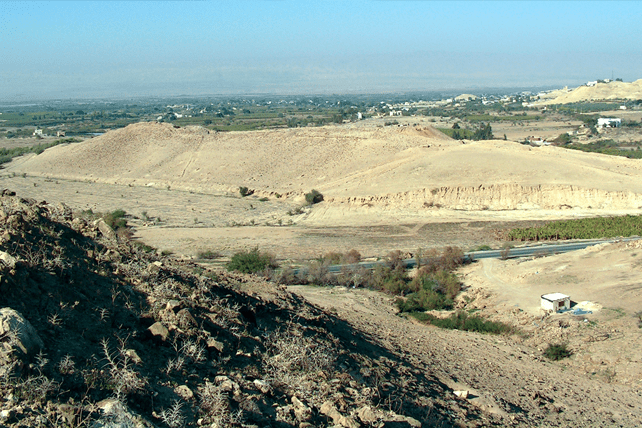But Hoffmeier added, “As we well know, however, there are highly qualified archaeologists whose minimalist presuppositions draw outrageous negative conclusions about the Bible and their work is rarely subjected to critical evaluation.”
In comments to RNS, Collins noted that most of the 21 authors of the paper are scientist peers who worked “six years” to produce their findings. But he conceded that “even if the two critics’ claims are valid about the failure to meet the crystalized criteria for extraterrestrial matter, it doesn’t even touch the melted room, plaster, humans, etc.”
He reiterated his agreement with the findings of the authors of the original paper, going a step further to claim it’s sure evidence of the biblical account of Sodom’s fall. In one of his many video clips he claims he’s walking through the mudbrick gate of the city, “We are now entering Sodom!”
But besides the causes of the destruction, Tall el-Hammam’s link to the biblical events has another test that is perhaps more difficult to prove — its date. The Bible chronology watchdog Answers in Genesis, along with many others such as Bryant Wood, editor of Bible and Spade, are rather candid in putting the fall of Sodom some two centuries off.
Furthermore, other details of the biblical narrative create issues. Simon Turpin, executive director and speaker for Answers in Genesis–U.K., argues, “The only way for proponents of Tall el-Hammam to synchronize it with biblical Sodom is to revise the biblical date of the Exodus, embrace a short Israelite sojourn in Egypt, and significantly reduce the lifespans of the patriarchs.”
Collins has gained traction, at least in the media, and a few scientists and some Bible scholars are telling him to keep looking. Tall el-Hammam, the largest known city of its era in the region, is the best candidate that has surfaced.
But the intense criticism from the larger fraternity of scientists includes assertions that some of the original papers’ authors have been too quick in the past to identify bolides. Science Integrity Digest pointed out that eight of the 21 authors are founders of the Comet Research Group, which has attempted “to show that ancient cities were frequently destroyed by comets, and to do something about comets before ‘your city is next.’”
But Hoffmeier reminds us that scientific debate can proceed without ridicule. “Walter Rast and Tom Schaub in the 1970s-’80s had advanced the idea that Bab ed-Dra and Numeira were associated with Sodom and Gomorrah,” he said. “Their idea was evaluated by the discipline and rejected. I think Collins and his team should be afforded [such] a courtesy.”
This article originally appeared here.

